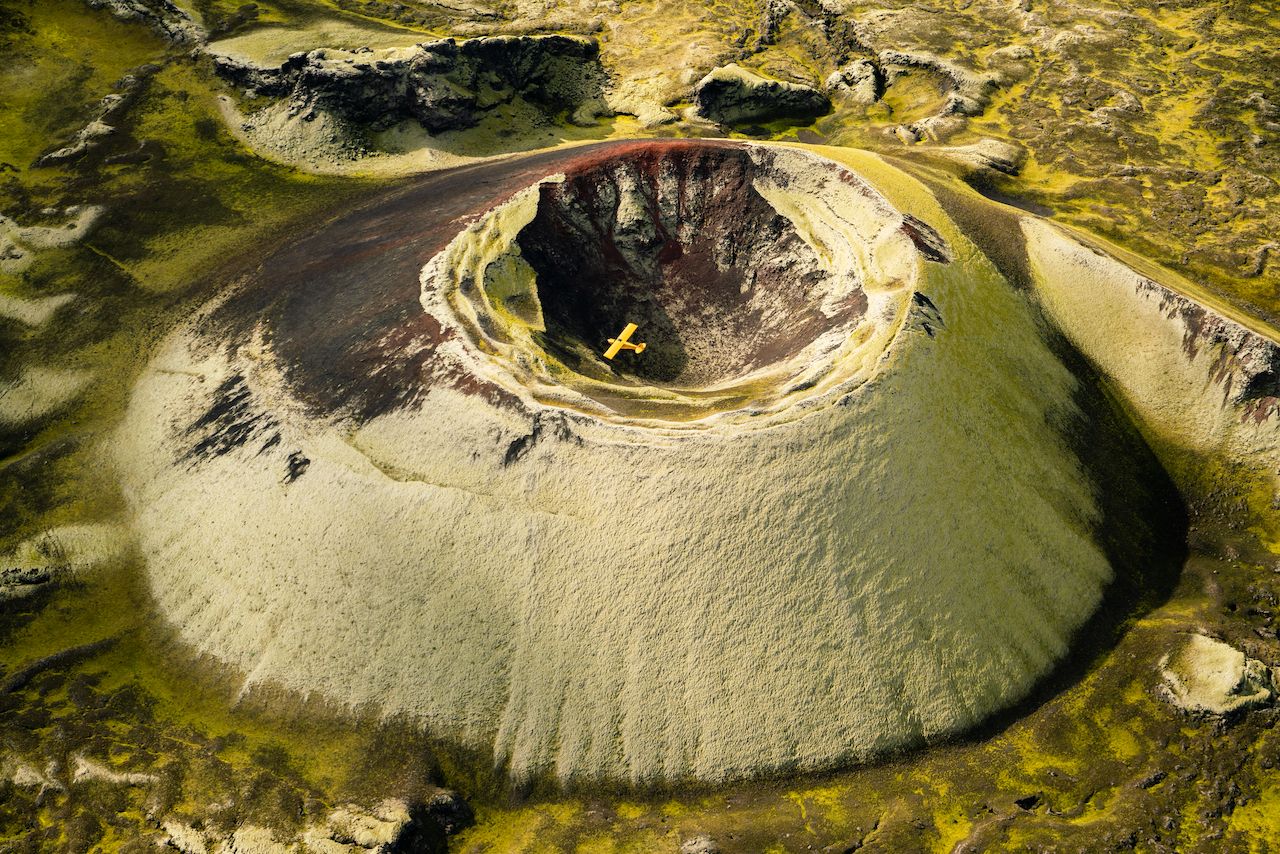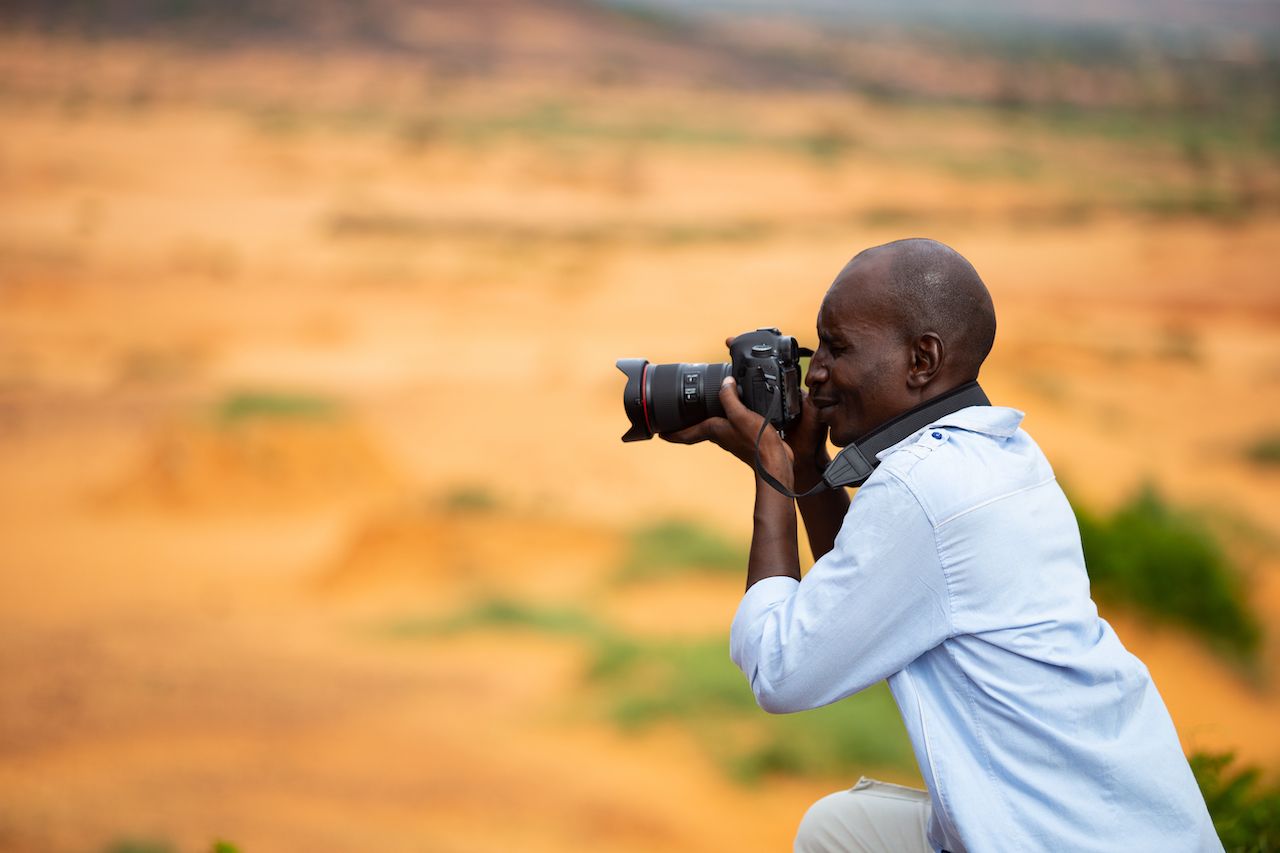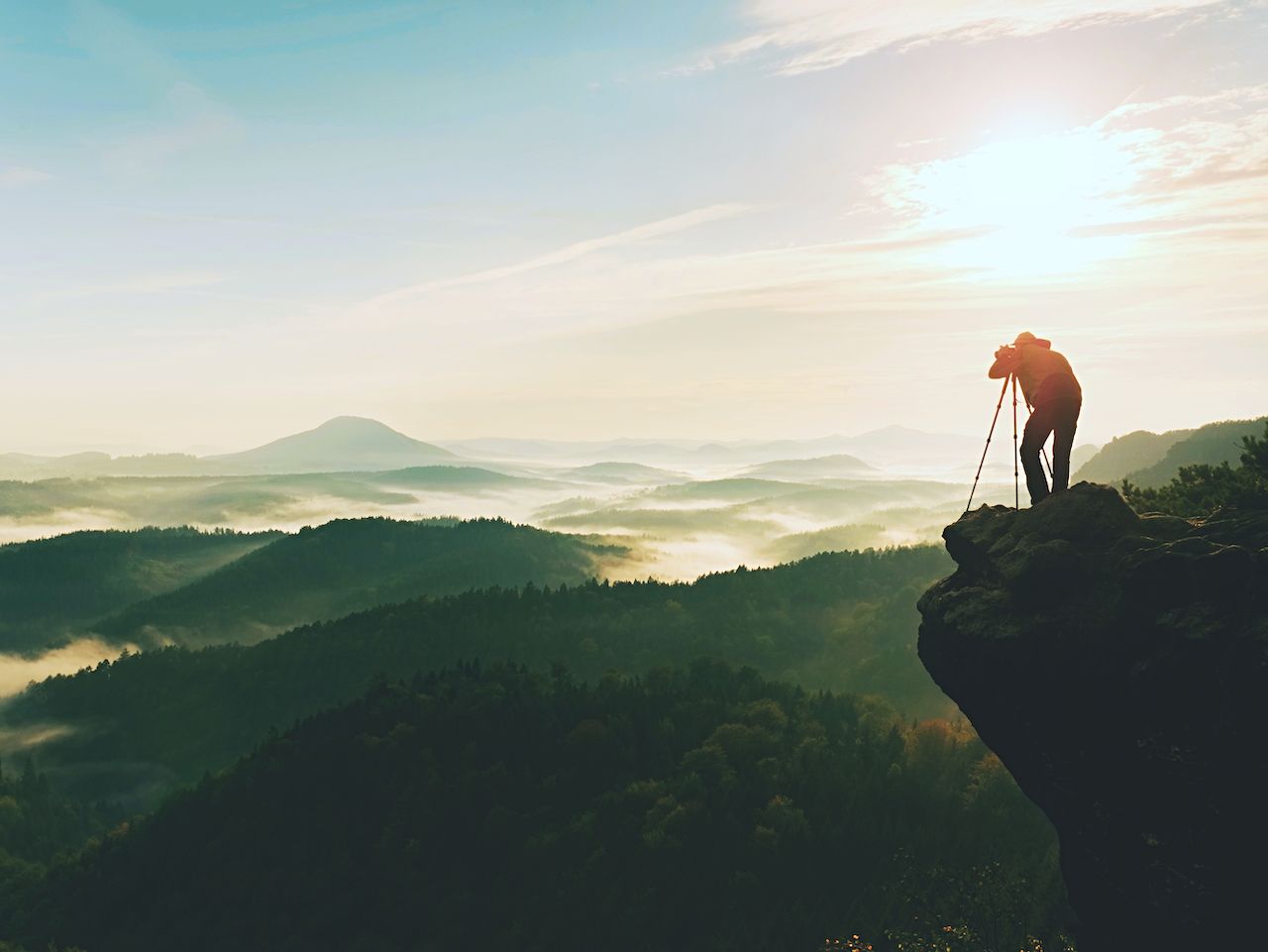Adventure photographer and now filmmaker Chris Burkard is living the dream. The California native has traveled the world on assignment for publications like National Geographic, recently released a coffee table book documenting Iceland’s glacial rivers and the fight to protect them, and just debuted a new film, Unnur, at the 2020 Mountainfilm Festival.


Photographer Chris Burkard on How to Become an Adventure Photographer
Listen to Chris Burkard discuss adventure photography and risk management on Matador’s No Blackout Dates podcast:
Burkard first made his name in the surf world, interning with Transworld Surf and selling shots to other publications in that space. From there, he transitioned into the larger world of adventure and travel, always keeping striking natural backdrops as his focus.
Many aspiring photographers look to seasoned veterans like Burkard for inspiration and ideas. And sure, the polished work donning his portfolio can make even the hardiest of land-dwellers want to grab a surfboard and push offshore. As hard as it is to believe, not every photo Burkard has taken in his career is jaw-dropping. Like all photographers, he had to start at the beginning, awkwardly holding a camera while learning the basics of shutter speed and white balancing.
Matador Network spoke with Burkard about those early days to gather his tips on getting started as an adventure photographer. He encourages aspiring photographers to keep it simple, at least straight out of the gate.
“Remember the camera is just a tool,” Burkard says. “What is more important is how you look at the world. Curiosity and a desire to explore, as well as passion, are a huge necessity when it comes to photography. If you start off with a basic camera that doesn’t have too many controls or functions, you can focus on light and composition.”
After one grasps the basic tenets of photography, they can move onto more expensive equipment.
“Once you get to the point where you’ve mastered your camera as a tool, and want more control, then it’s a good time to upgrade. If you start off with lots of complex gear, it can be overwhelming,” he said.
When purchasing equipment, shop for what is needed to bring your specific goals to fruition, Burkard advises.
“I only tell people to upgrade or spend more money if their current gear truly isn’t capable of doing what they need,” Burkard says. “If people want prints but your images aren’t sharp enough to be blown up, that could be a good time; or if your camera isn’t working in situations that you need it to, like in low light, that might make sense too. But unless you have really outgrown your gear, I don’t think it makes sense to spend more money. That money could be better used to just get out there and shoot.”
For optimal value based on its performance, Burkard recommends the Sony Alpha A6500, which starts at about $1,200 new, though used options are available through various websites. In addition to its affordability, Burkard is a fan of the camera’s fast frame rate and calls it the “best in its class” for FPS, autofocus, and sensor size.
“I have shot this camera on commercial and editorial assignments all over the globe,” Burkard says. “I’ve shot covers, billboards, and large prints with it with no problems.”

Photo: Chris Burkard
With a camera in hand, the best thing a photographer at any level can do is just get out there and shoot.
“Trial and error is your best friend when you are teaching yourself,” Burkard says. “Try different angles and different lighting. Keep an open mind, explore, and be willing to put yourself in lots of different situations. Getting out there and shooting outweighs almost any camera gear upgrades. That opinion has only grown throughout my years in this profession.”
Once a photographer has a collection of shots worth showing off, the next step is to create a portfolio of the best work, Burkard notes. Then, start putting yourself out there.
“You should be constantly shooting and trying to improve your portfolio,” Burkard says. “It is also a great idea to intern and assist for someone whenever you can. Learning the business side of things as well as seeing how someone earns a living doing what they love can be a huge help.”
And, don’t worry if your Instagram channel doesn’t blow up.

Photo: Madalin Olariu/Shutterstock
“While building your portfolio you should try and promote your work through as many channels as you can,” Burkard says. “Don’t limit yourself to social media. Try and submit as many publications/ blogs/ websites as possible. You can’t put food on the table with followers.”
Rather than spend a bunch of time online, it’s more important to connect with fellow photographers, publishers, and adventurers in person. Networking, Burkard explains, is key in an industry of self-made professionals.
“Who you know definitely helps as well,” Burkard says. “My internship at Transworld Surf helped me get my name out there. Working for Surfer magazine also helped me gain a lot of connections that I still use today. Reach out to people you admire and see if they need an assistant or see if there are any internship opportunities. This is how I first got my name out there and was able to make connections within the industry. Once I made these connections I was able to turn that into profit through the quality of my portfolio.”
“Both making connections and having a good portfolio are what is going to get you consistent work. I would say it would be more important to grow your talent and portfolio rather than knowing more people. You could have all the connections in the world, but if you don’t have the talent to perform on a professional level then you will not get very much work.”v
But how does one go about choosing what’s in that portfolio?
“The best thing that you can do as an aspiring photographer is to identify a style that represents you well, develop within that style, and keep shooting to perfect it,” Burkard says. “Editors and art directors want creatives who are the best in their niche, not someone who is okay at everything. It’s super important to have your images be recognizable by editors and others who are looking at your work. With the large number of photographers that are out there now you must find ways to stand out. The best compliment I can ever receive is when people know my photography work instantly when they see it.”

Photo: rdonar/Shutterstock
It can be tough to know when it’s time to turn a passionate hobby into something more. Getting published is a great feeling, but the rejections that tend to come alongside successful placements can be discouraging. This is why it’s so helpful to have a specific niche, Burkard explains. Start by observing what those a few steps ahead of you are doing — where they’re publishing, how they’re selling — and try to replicate it. Then, after a photographer has a specific style down and has identified outlets that publish work similar to theirs, the next step is submitting.
“A big part of this is experiencing the industry,” Burkard says. “Learn from a magazine setting or an editorial conference. Study a photographer you like and really understand the hustle it takes to do what they do. Understand what it’s like to be in those commercial and editorial situations where you’re trying to make it all work for a client. I look back at the time I spent driving down to Oceanside every week to intern at Transworld Surf, and a summer I interned with a landscape photographer. That’s where I feel like I gained the biggest understanding of what photography was really like. I realized what it means to run your own business. And if you still want to do it after that, you should.”
Burkard mentions the “business” here for the first time, but it’s a term anyone hoping to become a professional photographer must learn to know intimately.
“If you do decide to pursue it as a career, know that 50 percent of photography is the business side of things,” Burkard says. “Emails, outreach, marketing, etc. are absolute necessities that can be tough to begin with, but will enable you to do what you love. Keep exploring, follow your passions and photograph what you love. In the beginning you may need to also photograph things that don’t particularly interest you in order to fund what you want to shoot, but eventually you’ll be able to focus on your passions. Be good to people, make connections, be honest, and work hard. Promote yourself, and share your work.”